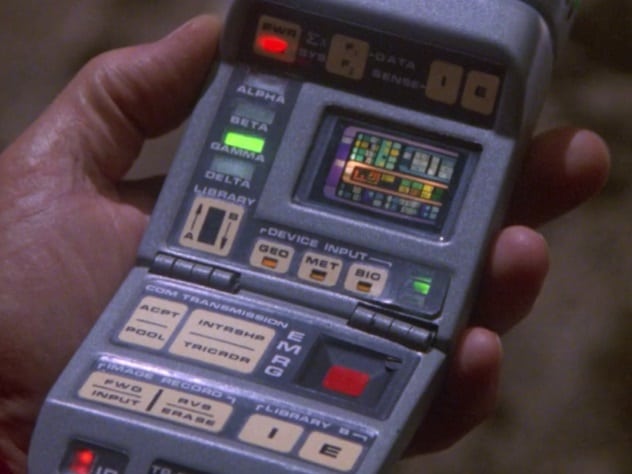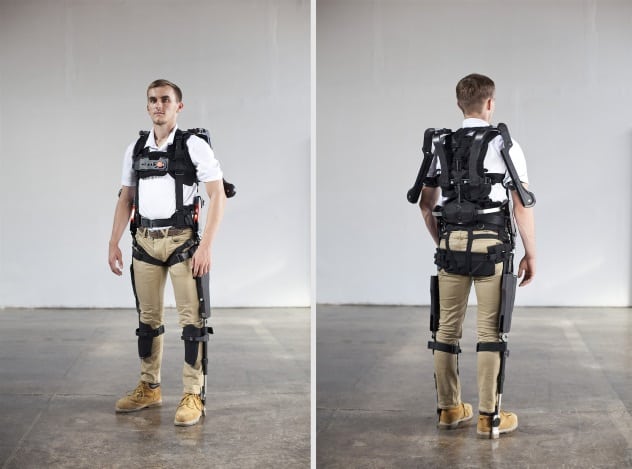
IPFS News Link • Techno Gadgets
10 Fictional Technologies You Didn't Know Existed
• ListVerseWe've all seen Star Wars, Star Trek, and Doctor Who. Consequently, we've all wished we could have a hoverboard, laser gun, lightsaber, and, well, everything else. Inevitably, the reality set in that our cars won't fly, the doors at the supermarket only open because of motion sensors, and we'll never be able to vaporize our bosses.
What you may not have realized, however, is that many "sci-fi" technologies already exist in some form or are being developed. We're not saying you're a year away from beaming up to a starship for a quick cruise over to Mars for your semiweekly Djem So class. Nevertheless, you might recognize the following ten technologies.
10A Real-Life Adamantium

Photo credit: 20th Century Fox/Marvel Entertainment
Seattle-based company Modumetal has successfully harnessed the process of nanolamination, in which the electric field which moves metallic ions into place can be controlled to determine exact placement of said ions. Researchers have been able to use this system to deposit layers of metal upon each other. This helps to account for any microscopic faults in the metal, making corrosion and cracking nearly impossible.
Using this technique, Modumetal has successfully created a new class of metal both low in cost and extraordinarily strong. Metals such as steel, known for their strength and resilience to corrosion, bending, and cracking, can be made as much as ten times stronger.[1]
This metal will likely see use in oil rigs, bridges, armor, building infrastructure, and other applications where steel is typically chosen. Due to its resistance to corrosion, oil rigs exposed to many corrosive chemicals will become safer, cheaper, and longer-lasting. Bridges, buildings, and other structures will also employ this new type of metal.
9Tricorders (Sort Of)

Photo credit: Paramount Pictures/CBS Studios
In 2011, the X Prize Foundation, sponsored by Qualcomm, announced that it would award $7 million to any team that could develop a real-life tricorder, the scanning device prominently featured in the Star Trek franchise. Specifically, Qualcomm is interested in replicating the tricorder's medical diagnostic abilities. A winning device would have to weigh less than 2.3 kilograms (5 lb), continuously record and show the body's five main vital signs, and be able to diagnose 12 ailments as well as the absence of any medical problems.
No team managed to create a tricorder that met all of the above requirements, but in April 2017, two were awarded $2.6 million and $1 million for their devices, which came close. Both tricorders are capable of monitoring vital signs and aim to diagnose nine medical problems or a lack of health issues.[2] Even if they didn't get their makers the grand prize, they still offer capabilities previously only seen in hospital rooms or ambulances in a much more accessible format.
The idea behind the tricorder contest was not to produce a medical instrument intended for the hands of first responders or doctors but rather a consumer-grade device, meant to be used in one's home, vehicle, or office. By being constantly aware of one's health status, any condition which may arise can be treated much more promptly. This implies that these tricorders have the potential to save millions of lives.
8Exoskeletons

Photo credit: U.S. Bionics
Exoskeletons are just what they sound like—machines attached to the exterior of one's person to provide additional strength, speed, and functionality. You may have seen them in video games and films, sometimes labeled "power suits" or "exosuits."
Exoskeletons have come a long way. In the 1960s, the first true powered exoskeleton was made by General Electric and driven by hydraulics and electric power. However, the machine was very large and deemed impractical for military use.
Decades later, exoskeletons are no longer fictitious. Globally, exoskeletons see usage by a number of wealthy warehouse and manufacturing companies, especially in cutting-edge nations such as South Korea. In 2017, it was estimated that several hundred were in operation for various purposes around the world.[3]
Modern exoskeletons can enable one person to achieve what several previously couldn't. They have allowed disabled individuals to find abilities beyond what they could ever have imagined. Looking forward, institutions such as the police, EMS, military, and medical clinics hope to employ the power of exoskeletons in their ranks.
7Stealth Suits

Photo credit: Adam Harvey
From Harry Potter to Lord of the Rings to cutting-edge military technology, the concept of invisibility has been a topic of interest for decades. The idea that one could be rendered indiscernible or even unseen to the eye or surveillance is one that has spawned much discussion.
Adam R. Harvey's startup, Stealth Wear, presents itself as an answer to the rising surveillance and invasion of privacy in the modern world. Using both cutting-edge technology and traditional Islamic fashion, Stealth Wear promises to hide the identity of an individual from thermal cameras. The garments are crafted from a synthetic fabric capable of reflecting thermal energy, reducing the wearer's chances of being identified by thermal seeking devices.[4]
In tests using FLIR (Forward Looking InfraRed) cameras, it was found that individuals wearing the clothing emitted little to no thermal signature and that their faces became entirely indiscernible. Is this the future of privacy, or is it just what criminals are looking for?
6Real-Time Language Translation Devices

Photo credit: TechCrunch
Imagine that you plan to journey to a foreign country, but you don't have the time to learn a complicated, difficult language. Rather than investing lots of money and time into learning a language, consider a device such as Waverly Labs's Pilot Earbuds. These earbuds come from a startup which raised more than $4 million in crowdfunding.[5]
The premise is simple—the devices hear incoming words, detect the language, translate them, and relay them into your ear via computerized speech. This allows you to communicate in real time using your native language, especially if the other person knows yours.
The devices are available for $249. Given the investment of time and money necessitated by a traditional language course, this price could be worth considering. However, the devices compete with Google's Pixel Buds, which cost $149. (Some claim the Pixel Buds aren't as effective.)





















